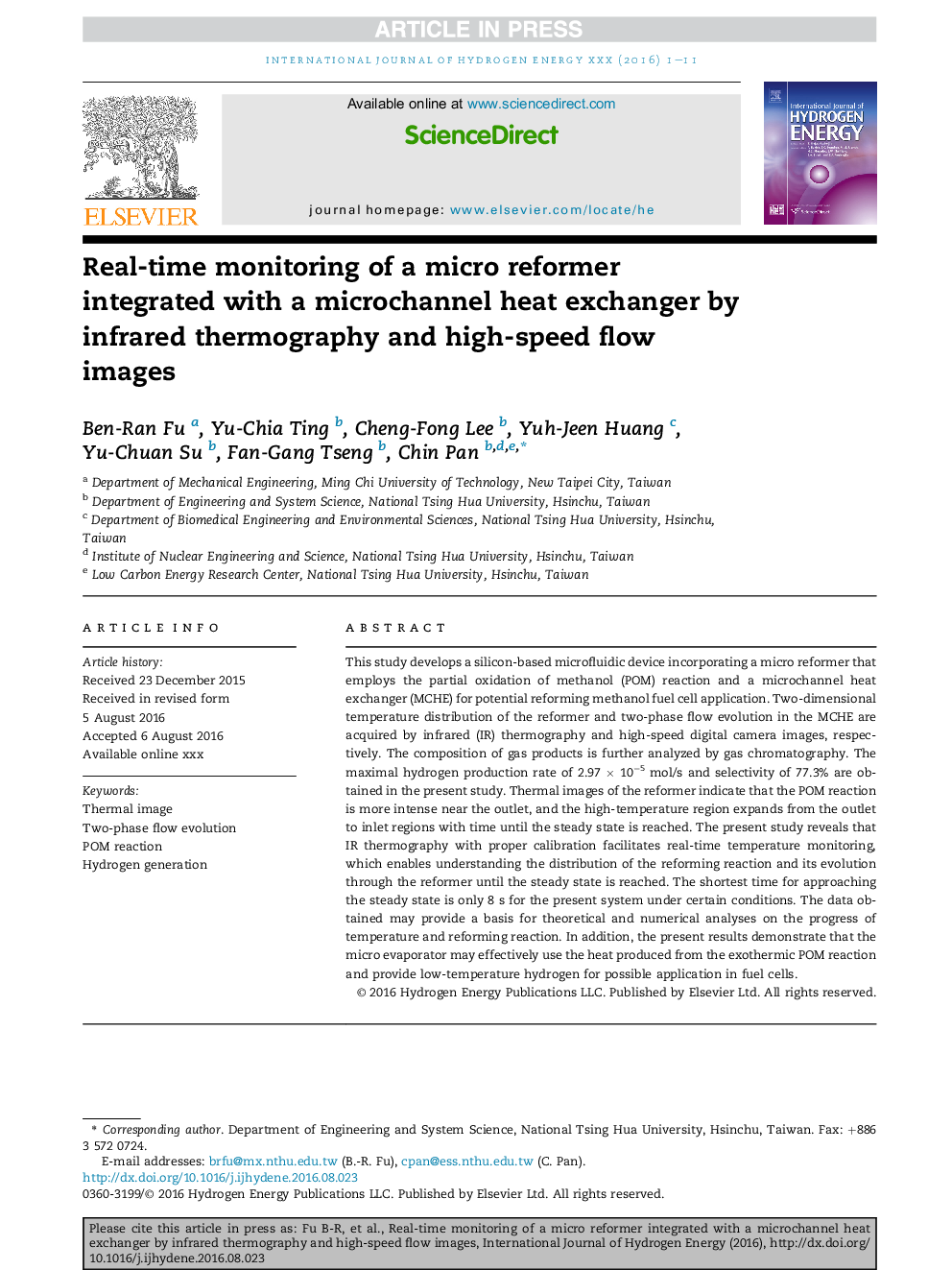| Article ID | Journal | Published Year | Pages | File Type |
|---|---|---|---|---|
| 5147410 | International Journal of Hydrogen Energy | 2016 | 11 Pages |
Abstract
This study develops a silicon-based microfluidic device incorporating a micro reformer that employs the partial oxidation of methanol (POM) reaction and a microchannel heat exchanger (MCHE) for potential reforming methanol fuel cell application. Two-dimensional temperature distribution of the reformer and two-phase flow evolution in the MCHE are acquired by infrared (IR) thermography and high-speed digital camera images, respectively. The composition of gas products is further analyzed by gas chromatography. The maximal hydrogen production rate of 2.97Â ÃÂ 10â5Â mol/s and selectivity of 77.3% are obtained in the present study. Thermal images of the reformer indicate that the POM reaction is more intense near the outlet, and the high-temperature region expands from the outlet to inlet regions with time until the steady state is reached. The present study reveals that IR thermography with proper calibration facilitates real-time temperature monitoring, which enables understanding the distribution of the reforming reaction and its evolution through the reformer until the steady state is reached. The shortest time for approaching the steady state is only 8Â s for the present system under certain conditions. The data obtained may provide a basis for theoretical and numerical analyses on the progress of temperature and reforming reaction. In addition, the present results demonstrate that the micro evaporator may effectively use the heat produced from the exothermic POM reaction and provide low-temperature hydrogen for possible application in fuel cells.
Keywords
Related Topics
Physical Sciences and Engineering
Chemistry
Electrochemistry
Authors
Ben-Ran Fu, Yu-Chia Ting, Cheng-Fong Lee, Yuh-Jeen Huang, Yu-Chuan Su, Fan-Gang Tseng, Chin Pan,
